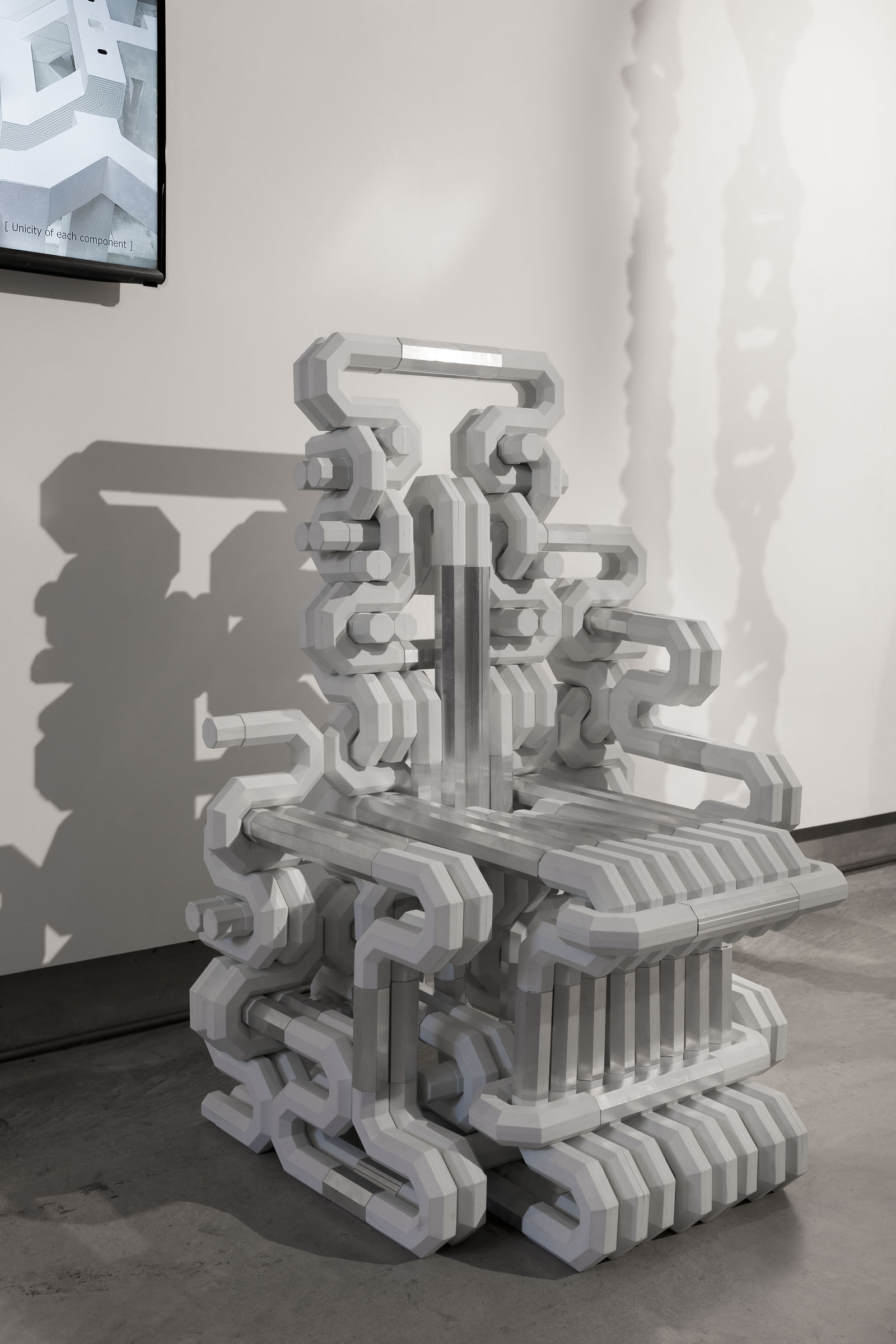i struggled quite a bit with keeping my variables in check without rotating absolutely everything chaotically. to deal with this, I ended up hard-coding too many numbers…
// jaden luscher
// jluscher
// section a
// project 05
// this program draws an art deco-influenced wallpaper
// initializing variables
var tileSize = 30;
// random color variables
var stemColor;
var budColor;
var frondColor;
function setup() {
createCanvas(450, 650);
background("#7F246B"); // fuschia
angleMode(DEGREES);
rectMode(CENTER);
noLoop();
stemColor = "#E09D00"; // ochre
budColor = "#FFD470"; //light yellow
frondColor = "#033B63"; // dark blue
}
function draw() {
for(var i = 0; i < 5; i++) {
drawBand();
translate(-3.21*tileSize, 3*tileSize);
}
}
function drawBand() {
translate(tileSize, 3*tileSize); // temporary, just to see tile in center
for(var k = 0; k < height/(3*tileSize); k++) {
for(var j = 0; j < width/(tileSize); j++) {
oneTile();
rotate(180);
translate (2.15*tileSize, tileSize/10);
// I cant figure out why the row slants if i dont move it
// vertically by the arbitrary number tileSize/10 :-(
}
translate(-3.21*tileSize, tileSize);
rotate(180);
}
print(height/ (6*tileSize));
}
function oneTile() {
flowerStem();
push();
noStroke();
// draw 2 fronds
translate(0,-tileSize/10); //bottom of fronds align to triangle edge
rotate(-90);
frond(tileSize); // right frond
rotate(-90);
frond(tileSize); //left frond
fill(budColor);
ellipse(0, 0, tileSize/3, tileSize*1.5)
pop();
}
function flowerStem() {
// rotate(180);
fill(stemColor);
stroke(stemColor);
triangle(0, -tileSize, -tileSize, 0, tileSize, 0); // triangle base
arc(0, -1.5*tileSize, tileSize, tileSize, -135, -45, PIE); // flower base
strokeWeight(2);
line(0, -tileSize, 0, -1.5*tileSize); // stem
// stamen
push();
translate(0, -1.5*tileSize);
rotate(45); // align stamen lines with base of flower arc
fill(budColor);
var numStamen = tileSize/2;
var angle = 90/numStamen;
for(var i=0; i <= numStamen; i++) {
strokeWeight(0.5);
line (0, 0, 0, -tileSize);
push();
noStroke();
ellipse(0, -tileSize, tileSize/12); // flower buds
pop();
rotate(-angle);
}
pop();
}
function frond(tileSize) {
fill(frondColor);
push();
var x = 0;
var y = 0;
var leafSize = tileSize/7; // width of leaf. /6 creates woven pattern, /8 is more leaf-like
var numLeaves = leafSize*2;
// left half of frond
push();
for (var i = 0; i < numLeaves; i++){
triangle(0, 0, x, -y, x+leafSize, -y);
rotate(90/numLeaves);
x += leafSize;
y += leafSize;
}
pop();
// right half of frond
push();
for (var i = 0; i < numLeaves; i++){
triangle(0, 0, x, y, x+leafSize, y);
rotate(90/numLeaves);
x -= leafSize;
y -= leafSize;
}
pop();
}
![[OLD SEMESTER] 15-104 • Introduction to Computing for Creative Practice](https://courses.ideate.cmu.edu/15-104/f2022/wp-content/uploads/2023/09/stop-banner.png)

